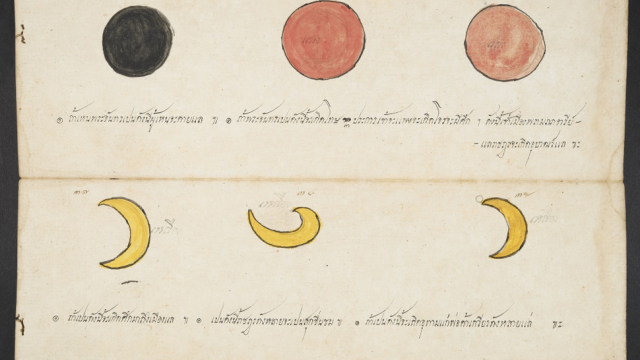This past Monday, people from around the world aimed their cameras upwards in hopes of catching a glimpse of the “blood moon” lunar eclipse. But as this 19th century manuscript shows, it’s a phenomenon that’s been chronicled long before the advent of camera phones and telescopic lenses.
This Thai manuscript dates back to the time of King Rama IV, also known as King Mongkut of Siam, who reigned from 1851 to 1868. The British Library tells us more:
Rama IV was a passionate astronomer and astrologer, who actually died after catching malaria during an excursion to southern Thailand to watch a total solar eclipse that he had accurately predicted. In 2003, a newly discovered asteroid, 151834 Mongkut, was named in honour of King Rama IV and his contributions to astronomy.
In our manuscript, two types of ‘red moons’ are illustrated at the top of folio 25, together with a warning that following the occurrence of such a moon three bad things might happen: the price of rice may increase, robberies may take place, and there is even the prospect of war! The entire population, including governors and Brahmins (learned men) could suffer great hardship.
Interesting how the blood moon is almost universally interpreted as an omen of bad things to come.
You can check out the entire manuscript here.
Top image by British Library, Or.15760, f.25/Public domain
